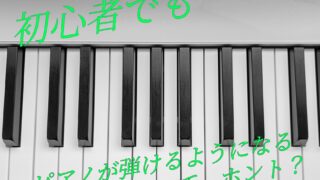TOEFL ibt リーディングテストのスコアを改善するには…
自分も、リーディング問題に苦戦したことがありますが、
一番の対策は、多読をすること。
このシリーズでは、リーディング対策用の設問も合わせて
様々なトピックでリーディング練習が出来るようにしております。
ぜひ、活用して、自身のスコアアップを目指して下さい。
本文
“The Changing Dynamics of the Modern Family”:
The family has long been considered a fundamental social institution, providing the framework for human relationships, support, and socialization. However, the dynamics of the modern family have undergone significant changes over the past few decades, reflecting shifts in societal norms, economic factors, and cultural influences.
One notable change is the rise of non-traditional family structures. Traditional nuclear families, consisting of a married heterosexual couple and their biological children, are no longer the dominant family model. Today, families take on various forms, including single-parent families, same-sex parent families, blended families, and cohabiting couples. These diverse family structures challenge traditional notions of family and require a broader understanding of family dynamics.
Another aspect of the changing dynamics of the modern family is the increased involvement of women in the workforce. With more women pursuing careers and attaining higher levels of education, the traditional gender roles within the family have shifted. Women are no longer confined to domestic duties, but rather contribute to the financial stability and decision-making processes within the family unit. This change has had implications for family dynamics, such as shared parenting responsibilities and the need for work-life balance.
Furthermore, technological advancements have greatly influenced family dynamics. The widespread use of the internet and social media has transformed the way families communicate and interact with one another. Digital platforms provide opportunities for long-distance communication, virtual gatherings, and information sharing. However, they also pose challenges such as increased screen time, potential privacy concerns, and the blurring of boundaries between personal and virtual relationships.
The changing dynamics of the modern family have implications for various aspects of society. For instance, these changes have prompted policymakers to revisit laws and regulations related to marriage, divorce, adoption, and child custody. Additionally, educational institutions have adapted to support the needs of diverse family structures, recognizing the importance of inclusive policies and curriculum. Furthermore, businesses have recognized the importance of family-friendly policies to attract and retain talent, such as flexible work arrangements and parental leave benefits.
In conclusion, the modern family has undergone significant changes, reflecting societal shifts and influences. The rise of non-traditional family structures, increased female participation in the workforce, and technological advancements have reshaped family dynamics. These changes have prompted adaptations in various spheres, from legislation to education and workplace policies. Understanding and addressing the evolving dynamics of the modern family is essential for promoting inclusivity, well-being, and resilience in contemporary society.
設問
- What are some non-traditional family structures mentioned in the passage?
A. Single-parent families, same-sex parent families, blended families, and cohabiting couples.
B. Nuclear families only.
C. Extended families and joint families.
D. Traditional families with a married heterosexual couple and their biological children. - What is one factor that has contributed to the changing dynamics of the modern family?
A. Increased involvement of women in the workforce.
B. Technological advancements.
C. Cultural influences.
D. All of the above. - How have traditional gender roles within the family changed?
A. Women now contribute to the financial stability and decision-making processes within the family unit.
B. Women are solely responsible for domestic duties.
C. Men are primarily responsible for child-rearing and household chores.
D. Men and women have separate roles within the family, with limited overlap. - What impact have technological advancements had on family dynamics?
A. Transformation of communication and interaction patterns within families.
B. Decreased screen time and increased face-to-face interaction.
C. Complete separation between personal and virtual relationships.
D. No significant impact on family dynamics. - What implications have the changing dynamics of the modern family had on policymakers?
A. Revisiting laws and regulations related to marriage, divorce, adoption, and child custody.
B. Ignoring the changing dynamics of the modern family.
C. Maintaining traditional family structures in legislation.
D. None of the above. - How have educational institutions adapted to the changing dynamics of the modern family?
A. By implementing inclusive policies and curriculum.
B. By promoting traditional family structures.
C. By excluding non-traditional families from enrollment.
D. By not addressing the changing dynamics of the modern family. - What are some family-friendly policies that businesses have implemented?
A. Flexible work arrangements and parental leave benefits.
B. Strict working hours with no flexibility.
C. No consideration for the needs of working parents.
D. No policies related to family-friendly benefits. - What is the significance of understanding the evolving dynamics of the modern family?
A. Promoting inclusivity, well-being, and resilience in contemporary society.
B. Maintaining traditional family structures.
C. Limiting the role of women in the workforce.
D. Excluding non-traditional families from society. - Which of the following is NOT a factor contributing to the changing dynamics of the modern family?
A. Cultural influences.
B. Economic factors.
C. Technological advancements.
D. Stable traditional family structures. - Why is it important for educational institutions to support the needs of diverse family structures?
A. To recognize the importance of inclusive policies and curriculum.
B. To promote traditional family structures.
C. To exclude non-traditional families from education.
D. To maintain traditional gender roles within families.
解答・解説
- What are some non-traditional family structures mentioned in the passage?
A. Single-parent families, same-sex parent families, blended families, and cohabiting couples.
B. Nuclear families only.
C. Extended families and joint families.
D. Traditional families with a married heterosexual couple and their biological children.
答え: A. 一人親家族、同性の親を持つ家族、再婚家族、同棲カップル
解説: パッセージには、一人親家族、同性の親を持つ家族、再婚家族、同棲カップルなど、伝統的でない様々な家族の形態が挙げられています。
- What is one factor that has contributed to the changing dynamics of the modern family?
A. Increased involvement of women in the workforce.
B. Technological advancements.
C. Cultural influences.
D. All of the above.
答え: D. すべての回答
解説: 近代家族の変化に寄与している要因として、女性の労働参加の増加、技術の進歩、文化的な影響が挙げられます。
- How have traditional gender roles within the family changed?
A. Women now contribute to the financial stability and decision-making processes within the family unit.
B. Women are solely responsible for domestic duties.
C. Men are primarily responsible for child-rearing and household chores.
D. Men and women have separate roles within the family, with limited overlap.
答え: A. 女性は今や家族単位の経済的安定と意思決定プロセスに貢献しています。
解説: 近代家族の変化に伴い、女性の伝統的な性別役割は変化しました。女性は家庭内の仕事に限らず、家族の経済的安定や意思決定プロセスにも貢献しています。
- What impact have technological advancements had on family dynamics?
A. Transformation of communication and interaction patterns within families.
B. Decreased screen time and increased face-to-face interaction.
C. Complete separation between personal and virtual relationships.
D. No significant impact on family dynamics.
答え: A. 家族内でのコミュニケーションと相互作用のパターンの変革
解説: 技術の進歩は家族のダイナミクスに大きな影響を与えています。インターネットやソーシャルメディアの普及により、家族間のコミュニケーションや相互作用の方法が変わりました。
- What implications have the changing dynamics of the modern family had on policymakers?
A. Revisiting laws and regulations related to marriage, divorce, adoption, and child custody.
B. Ignoring the changing dynamics of the modern family.
C. Maintaining traditional family structures in legislation.
D. None of the above.
答え: A. 結婚、離婚、養子縁組、子の親権に関連する法律と規制の再検討
解説: 近代家族の変化は、政策立案者に対して結婚、離婚、養子縁組、子の親権に関連する法律と規制の再検討を促しました。
- How have educational institutions adapted to the changing dynamics of the modern family?
A. By implementing inclusive policies and curriculum.
B. By promoting traditional family structures.
C. By excluding non-traditional families from enrollment.
D. By not addressing the changing dynamics of the modern family.
答え: A. 包括的な政策とカリキュラムの導入によって
解説: 教育機関は、多様な家族構造のニーズをサポートするために包括的な政策とカリキュラムを導入してきました。
- What are some family-friendly policies that businesses have implemented?
A. Flexible work arrangements and parental leave benefits.
B. Strict working hours with no flexibility.
C. No consideration for the needs of working parents.
D. No policies related to family-friendly benefits.
答え: A. 柔軟な労働条件と育児休暇の特典
解説: 企業は柔軟な労働条件や育児休暇の特典など、家族にやさしい政策を実施しています。
- What is the significance of understanding the evolving dynamics of the modern family?
A. Promoting inclusivity, well-being, and resilience in contemporary society.
B. Maintaining traditional family structures.
C. Limiting the role of women in the workforce.
D. Excluding non-traditional families from society.
答え: A. 現代社会における包括性、福祉、強靱性の促進
解説: 近代家族の変化するダイナミクスを理解することは、現代社会における包括性、福祉、強靱性の促進に重要です。
- Which of the following is NOT a factor contributing to the changing dynamics of the modern family?
A. Cultural influences.
B. Economic factors.
C. Technological advancements.
D. Stable traditional family structures.
答え: D. 安定した伝統的な家族構造
解説: 近代家族の変化の要因として文化的な影響、経済的要素、技術の進歩が挙げられますが、安定した伝統的な家族構造は変化の要因ではありません。
- Why is it important for educational institutions to support the needs of diverse family structures?
A. To recognize the importance of inclusive policies and curriculum.
B. To promote traditional family structures.
C. To exclude non-traditional families from education.
D. To maintain traditional gender roles within families.
答え: A. 包括的な政策とカリキュラムの重要性を認識するため
解説: 教育機関が多様な家族構造のニーズをサポートすることは、包括的な政策とカリキュラムの重要性を認識するために重要です。
本文の日本語訳
「現代家族の変化するダイナミクス」
家族は長い間、人間の関係、サポート、社会化の枠組みを提供する基本的な社会機関とされてきました。しかし、現代の家族のダイナミクスは過去数十年間で大きな変化を遂げており、社会的な規範や経済的要素、文化的な影響の変化を反映しています。
顕著な変化の一つは、非伝統的な家族構造の台頭です。伝統的な核家族である結婚した異性愛者のカップルとその生物学的な子供からなる家族は、もはや主流の家族モデルではありません。今日の家族は、シングル親家族、同性愛者の親族、再婚家族、同棲カップルなど、さまざまな形態を取っています。これら多様な家族構造は、伝統的な家族観念に挑戦し、より広い家族のダイナミクスの理解を必要とします。
もう一つの変化する現代家族の側面は、女性の職場での参加の増加です。より多くの女性がキャリアを追求し、高い教育水準を達成するようになったことで、家族内の伝統的な性別役割が変化しました。女性はもはや家事に束縛されることはなく、むしろ家族の経済的安定性や意思決定プロセスに貢献しています。この変化には、共同の育児責任や仕事と生活のバランスの必要性など、家族のダイナミクスに影響を与えています。
さらに、技術の進歩は家族のダイナミクスに大きな影響を与えています。インターネットとソーシャルメディアの広範な利用は、家族間のコミュニケーションや相互作用のあり方を変えました。デジタルプラットフォームは、遠隔地でのコミュニケーションやバーチャルな集まり、情報共有の機会を提供します。しかし、これにはスクリーン時間の増加、潜在的なプライバシーの懸念、個人とバーチャルな関係の境界の曖昧化といった課題も存在します。
現代家族の変化するダイナミクスは、社会のさまざまな側面に影響を与えています。例えば、これらの変化は政策立案者に対して結婚、離婚、養子縁組、子の親権に関連する法律と規制の再検討を促しています。また、教育機関は多様な家族構造のニーズをサポートするために適応し、包括的な政策とカリキュラムの重要性を認識しています。さらに、企業は柔軟な労働環境や育児休暇の福利厚生などの家族にやさしい政策の重要性を認識しています。
結論として、現代の家族は大きな変化を遂げており、社会の変化と影響を反映しています。非伝統的な家族構造の台頭、女性の労働市場への参加の増加、技術の進歩は家族のダイナミクスを再構築しました。これらの変化により、立法から教育や職場の政策まで、さまざまな領域で適応が行われています。現代家族の変化するダイナミクスを理解し、対応することは包括性と幸福、社会の回復力を促進するために不可欠です。
次の問題
[広告]
確かな英語力は、日々の継続から。
その継続を後押しする、第二言語習得理論に基づいた
オンライン英語学習プログラムがあります。
英語を使う人のための、確実なスキルアップが望める
7日間の無料体験はこちらから!

TOEFL ibt ライティング対策も、
あるテクノロジーを活用すれば、一発解決!
自分1人でも、ライティングは対策出来る時代に。
英会話を始めてみたいけれど、どのサービスが良いか分からない…
そんな方は、まず、この記事で3つのサービスを比べてみてはいかがでしょうか?
英語力を効率良く伸ばすことができるサービス3選です。




-320x180.jpg)
-320x180.jpg)
-320x180.jpg)
-320x180.jpg)







コメント